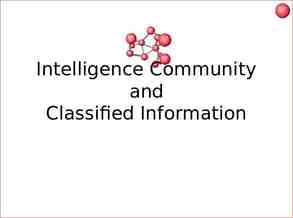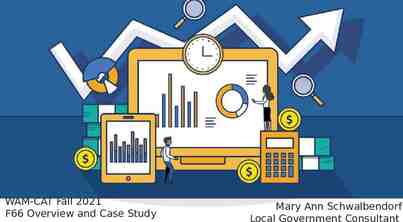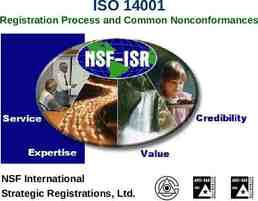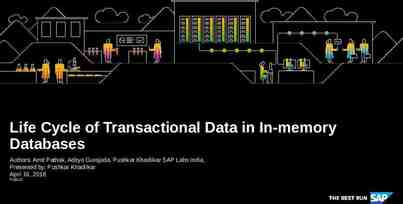Chapter 9 Decision Support Systems McGraw-Hill/Irwin
70 Slides2.38 MB

Chapter 9 Decision Support Systems McGraw-Hill/Irwin 2008,The McGraw-Hill Companies, All Rights Reserved

Learning Objectives 1. Identify the changes taking place in the form and use of decision support in business. 2. Identify the role and reporting alternatives of management information systems. 3. Describe how online analytical processing can meet key information needs of managers. 4. Explain the decision support system concept and how it differs from traditional management information systems. 9- 2

Learning Objectives 5. Explain how the following information systems can support the information needs of executives, managers, and business professionals: a. Executive information systems b. Enterprise information portals c. Knowledge management systems 9- 3

Learning Objectives 5. Identify how neural networks, fuzzy logic, genetic algorithms, virtual reality, and intelligent agents can be used in business. 6. Give examples of several ways expert systems can be used in business decision-making situations. 9- 4

Information required at different management levels 9- 5

Levels of Management Decision Making Strategic management – Executives develop organizational goals, strategies, policies, and objectives – As part of a strategic planning process Tactical management – Managers and business professionals in self-directed teams – Develop short- and medium-range plans, schedules and budgets – Specify the policies, procedures and business objectives for their subunits 9- 6

Levels of Management Decision Making Operational management – Managers or members of self-directed teams – Develop short-range plans such as weekly production schedules 9- 7

Information Quality Information products whose characteristics, attributes, or qualities make the information more value Information has 3 dimensions: – Time – Content – Form 9- 8

Attributes of Information Quality 9- 9

Decision Structure Structured – situations where the procedures to follow when a decision is needed can be specified in advance Unstructured – decision situations where it is not possible to specify in advance most of the decision procedures to follow Semistructured - decision procedures that can be prespecified, but not enough to lead to a definite recommended decision 9- 10

Information Systems to support decisions Management Information Systems Decision Support Systems Decision support provided Provide information about the performance of the organization Provide information and techniques to analyze specific problems Information form and frequency Periodic, exception, demand, and push reports and responses Interactive inquiries and responses Information format Prespecified, fixed format Ad hoc, flexible, and adaptable format Information processing methodology Information produced by extraction and manipulation of business data Information produced by analytical modeling of business data 9- 11

Decision Support Trends Personalized proactive decision analytics Web-Based applications Decisions at lower levels of management and by teams and individuals Business intelligence applications 9- 12

Business Intelligence Applications 9- 13

Decision Support Systems DSS Provide interactive information support to managers and business professionals during the decisionmaking process Use: – Analytical models – Specialized databases – A decision maker’s own insights and judgments – Interactive computer-based modeling To support semistructured business decisions 9- 14

DSS components 9- 15

DSS Model base Model base – A software component that consists of models used in computational and analytical routines that mathematically express relations among variables Examples: – Linear programming models, – Multiple regression forecasting models – Capital budgeting present value models 9- 16

Management Information Systems MIS Produces information products that support many of the day-to-day decision-making needs of managers and business professionals Prespecified reports, displays and responses Support more structured decisions 9- 17

MIS Reporting Alternatives Periodic Scheduled Reports – Prespecified format on a regular basis Exception Reports – Reports about exceptional conditions – May be produced regularly or when exception occurs Demand Reports and Responses – Information available when demanded Push Reporting – Information pushed to manager 9- 18

Online Analytical Processing OLAP – Enables mangers and analysts to examine and manipulate large amounts of detailed and consolidated data from many perspectives – Done interactively in real time with rapid response 9- 19

OLAP Analytical Operations Consolidation – Aggregation of data Drill-down – Display detail data that comprise consolidated data Slicing and Dicing – Ability to look at the database from different viewpoints 9- 20

OLAP Technology 9- 21

Geographic Information Systems GIS – DSS that uses geographic databases to construct and display maps and other graphics displays – That support decisions affecting the geographic distribution of people and other resources – Often used with Global Position Systems (GPS) devices 9- 22

Data Visualization Systems DVS – DSS that represents complex data using interactive three-dimensional graphical forms such as charts, graphs, and maps – DVS tools help users to interactively sort, subdivide, combine, and organize data while it is in its graphical form. 9- 23

Using DSS What-if Analysis – End user makes changes to variables, or relationships among variables, and observes the resulting changes in the values of other variables Sensitivity Analysis – Value of only one variable is changed repeatedly and the resulting changes in other variables are observed 9- 24

Using DSS Goal-Seeking – Set a target value for a variable and then repeatedly change other variables until the target value is achieved – How can analysis Optimization – Goal is to find the optimum value for one or more target variables given certain constraints – One or more other variables are changed repeatedly until the best values for the target variables are discovered 9- 25

Data Mining Main purpose is to provide decision support to managers and business professionals through knowledge discovery Analyzes vast store of historical business data Tries to discover patterns, trends, and correlations hidden in the data that can help a company improve its business performance Use regression, decision tree, neural network, cluster analysis, or market basket analysis 9- 26

Market Basket Analysis One of most common data mining for marketing The purpose is to determine what products customers purchase together with other products 9- 27

Executive Information Systems EIS – Combine many features of MIS and DSS – Provide top executives with immediate and easy access to information – About the factors that are critical to accomplishing an organization’s strategic objectives (Critical success factors) – So popular, expanded to managers, analysts and other knowledge workers 9- 28

Features of an EIS Information presented in forms tailored to the preferences of the executives using the system – Customizable graphical user interfaces – Exception reporting – Trend analysis – Drill down capability 9- 29

Enterprise Interface Portals EIP – Web-based interface – Integration of MIS, DSS, EIS, and other technologies – Gives all intranet users and selected extranet users access – To a variety of internal and external business applications and services Typically tailored to the user giving them a personalized digital dashboard 9- 30

Enterprise Information Portal Components 9- 31

Knowledge Management Systems The use of information technology to help gather, organize, and share business knowledge within an organization Enterprise Knowledge Portals – EIPs that are the entry to corporate intranets that serve as knowledge management systems 9- 32

Enterprise Knowledge Portals 9- 33

Artificial Intelligence (AI) A field of science and technology based on disciplines such as computer science, biology, psychology, linguistics, mathematics, and engineering Goal is to develop computers that can simulate the ability to think, as well as see, hear, walk, talk, and feel 9- 34

Attributes of Intelligent Behavior Think and reason Use reason to solve problems Learn or understand from experience Acquire and apply knowledge Exhibit creativity and imagination Deal with complex or perplexing situations Respond quickly and successfully to new situations Recognize the relative importance of elements in a situation Handle ambiguous, incomplete, or erroneous information 9- 35

Domains of Artificial Intelligence 9- 36

Cognitive Science Based in biology, neurology, psychology, etc. Focuses on researching how the human brain works and how humans think and learn 9- 37

Robotics Based in AI, engineering and physiology Robot machines with computer intelligence and computer controlled, humanlike physical capabilities 9- 38

Natural Interfaces Based in linguistics, psychology, computer science, etc. Includes natural language and speech recognition Development of multisensory devices that use a variety of body movements to operate computers Virtual reality – Using multisensory human-computer interfaces that enable human users to experience computer-simulated objects, spaces and “worlds” as if they actually exist 9- 39

Expert Systems ES A knowledge-based information system (KBIS) that uses its knowledge about a specific, complex application to act as an expert consultant to end users KBIS is a system that adds a knowledge base to the other components on an IS 9- 40

Expert System Components Knowledge Base – Facts about specific subject area – Heuristics that express the reasoning procedures of an expert (rules of thumb) Software Resources – Inference engine processes the knowledge and makes inferences to make recommend course of action – User interface programs to communicate with end user – Explanation programs to explain the reasoning process to end user 9- 41

Expert System Components 9- 42

Methods of Knowledge Representation Case-Based – knowledge organized in form of cases – Cases: examples of past performance, occurrences and experiences Frame-Based – knowledge organized in a hierarchy or network of frames – Frames: entities consisting of a complex package of data values 9- 43

Methods of Knowledge Representation Object-Based – knowledge organized in network of objects – Objects: data elements and the methods or processes that act on those data Rule-Based – knowledge represented in rules and statements of fact – Rules: statements that typically take the form of a premise and a conclusion – Such as, If (condition) then (conclusion) 9- 44

Expert System Benefits Faster and more consistent than an expert Can have the knowledge of several experts Does not get tired or distracted by overwork or stress Helps preserve and reproduce the knowledge of experts 9- 45

Expert System Limitations Limited focus Inability to learn Maintenance problems Developmental costs Can only solve specific types of problems in a limited domain of knowledge 9- 46

Suitability Criteria for Expert Systems Domain: subject area relatively small and limited to welldefined area Expertise: solutions require the efforts of an expert Complexity: solution of the problem is a complex task that requires logical inference processing (not possible in conventional information processing) Structure: solution process must be able to cope with illstructured, uncertain, missing and conflicting data Availability: an expert exists who is articulate and cooperative 9- 47

Development Tool Expert System Shell – Software package consisting of an expert system without its knowledge base – Has inference engine and user interface programs 9- 48

Knowledge Engineer A professional who works with experts to capture the knowledge they possess Builds the knowledge base using an iterative, prototyping process 9- 49

Neural Networks Computing systems modeled after the brain’s mesh-like network of interconnected processing elements, called neurons Interconnected processors operate in parallel and interact with each other Allows network to learn from data it processes 9- 50

Fuzzy Logic Method of reasoning that resembles human reasoning Allows for approximate values and inferences and incomplete or ambiguous data instead of relying only on crisp data Uses terms such as “very high” rather than precise measures 9- 51

Genetic Algorithms Software that uses – Darwinian (survival of the fittest), randomizing, and other mathematical functions – To simulate an evolutionary process that can yield increasingly better solutions to a problem 9- 52

Virtual Reality (VR) Computer-simulated reality Relies on multisensory input/output devices such as – a tracking headset with video goggles and stereo earphones, – a data glove or jumpsuit with fiber-optic sensors that track your body movements, and – a walker that monitors the movement of your feet 9- 53

Intelligent Agents A software surrogate for an end user or a process that fulfills a stated need or activity Uses its built-in and learned knowledge base To make decisions and accomplish tasks in a way that fulfills the intentions of a user Also called software robots or bots 9- 54

User Interface Agents Interface Tutors – observe user computer operations, correct user mistakes, and provide hints and advice on efficient software use Presentation – show information in a variety of forms and media based on user preferences Network Navigation – discover paths to information and provide ways to view information based on user preferences Role-Playing – play what-if games and other roles to help users understand information and make better decisions 9- 55

Information Management Agents Search Agents – help users find files and databases, search for desired information, and suggest and find new types of information products, media, and resources Information Brokers – provide commercial services to discover and develop information resources that fit the business or personal needs of a user Information Filters – receive, find, filter, discard, save, forward, and notify users about products received or desired 9- 56

Case 1: Oracle Corporation and Others: Dashboards for Executives and Business Professionals: The Power and the Challenge The dashboard has become the CEO’s killer app. Dashboards provide key business information to executives, managers, and business professionals. At GE executives use dashboard to follow the production of everything from light bulbs to dishwashers, making sure production lines are running smoothly. Dashboards have some challenges. These tools can raise pressure on employees, create divisions in the office, and lead workers to hoard information. Dashboards can hurt the morale of employees. 9- 57

Case Study Questions 1. What is the attraction of dashboards to CEOs and other executives? What real business value do they provide to executives? 2. The case emphasizes that managers of small businesses and many business professionals now rely on dashboards. What business benefits do dashboards provide to this business audience? 3. What are several reasons for criticism of the use of dashboards by executives? Do you agree with any of this criticism? Why or why not? 9- 58

Real World Internet Activity 1. Use the Internet to research makers of dashboards for large and small business. For example, try NetSuite, Hyperion Solutions, and Salesforce.com for relatively inexpensive versions and Microsoft, Oracle, and SAP for more costly corporate dashboards. Evaluate the dashboard examples and demos you experience. Pick your favorites and explain your reasons for doing so to the class. 9- 59

Real World Group Activity 2. How would you like to work for an executive whose dashboard provides the level of information about company and employee performance described in this case? Would you want that level of information when you enter the executive ranks? – Discuss this issue, and formulate suggestions on any changes or safeguards you would propose for the business use of dashboards. 9- 60

Case 2: Harrah’s Entertainment, LendingTree, DeepGreen Financial, and Cisco Systems: The promise of AI of automating decision making has been very slow to materialize. The new generation AI applications are easier to create and manage, do not require anyone to identify the problems or to initiate the analysis, decision-making capabilities are embedded into the normal flow of work, and are triggered without human intervention. They sense online data or conditions, apply codified knowledge or logic and make decisions with minimal human intervention. But they rely on experts and managers to create and maintain rules and monitor the results. Also, managers in charge of automated decision systems must develop processes for managing exceptions. 9- 61

Case Study Questions 1. Why did some previous attempts to use artificial intelligence technologies fail? What key differences of the new AI-based applications versus the old cause the authors to declare that automated decision making is finally coming of age? 2. What types of decisions are best suited for automated decision making? Provide several examples of successful applications from the companies in this case to illustrate your answer. 9- 62

Case Study Questions 3. What role do humans play in automated decision making applications? What are some of the challenges faced by managers where automated decision-making systems are being used? What solutions are needed to meet such challenges? 9- 63

Real World Internet Activity 1. Use the Internet to find examples of companies that are using automated decision making or other business applications of artificial intelligence. You might begin by looking for such information on the companies mentioned in this case and their main competitors, and then widen your search to encompass other companies. What business benefits or challenges do you discover? 9- 64

Real World Group Activity 2. Artificial intelligence applications in business such as automated decision making pose potential business risks, as evidenced by the Cisco Systems experience, and have the potential for other risks to business and human security and safety, for example. – Discuss such risks and propose controls and safeguards to lessen the possibility of such occurrences. 9- 65

Case 3: IBM, Linden Labs, and Others: The Business Case for Virtual Worlds in a 3D Internet Second Life is a 3-D virtual world entirely built and owned by its Residents. Since opening to the public in 2003, it has grown explosively and today it is inhabited by more than eight million residents from around the globe. It is catching the attention of many companies because of it’s ability to use as a platform for a whole new Net with huge opportunities to sell products and services. It is also possible to exchange Second Life’s currency, called Linden dollars, for the real currency for a fee. Residents could thus build, own, or sell their digital creations. Second Life has become a real economy. 9- 66

Case Study Questions 1. What are the most important business benefits and limitations of 3D virtual worlds like Second Life to real-world companies such as those mentioned in this case? 2. Why do you think IBM is taking a leadership role in promoting and using 3D metaverses like Second Life? What business benefits might it expect to gain from its involvement in developing a 3D Internet? Explain your reasoning. 9- 67

Case Study Questions 3. Are 3D virtual worlds like Second Life “solutions in search of a problem” at this stage of their development, in that do not satisfy any vital business need? Why or why not? 9- 68

Real World Internet Activity 1. Search the Internet to determine how Second Life, Linden Labs, IBM, and other companies mentioned in this case are doing in terms of the growth and business success of their development or use of 3D virtual worlds. Have new competitors successfully entered the 3D Internet market? If so, how do they differ in the products and services they offer? 9- 69

Real World Group Activity 2. Visit the Second Life Web site and evaluate the experience in terms of level of difficulty, response times, operation of basic functions, realism, and so forth. Are 3D virtual worlds like Second Life ready for widespread use as an important form of social networking? How could they improve what they offer to make it more appealing and successful? Debate these issues. 9- 70






